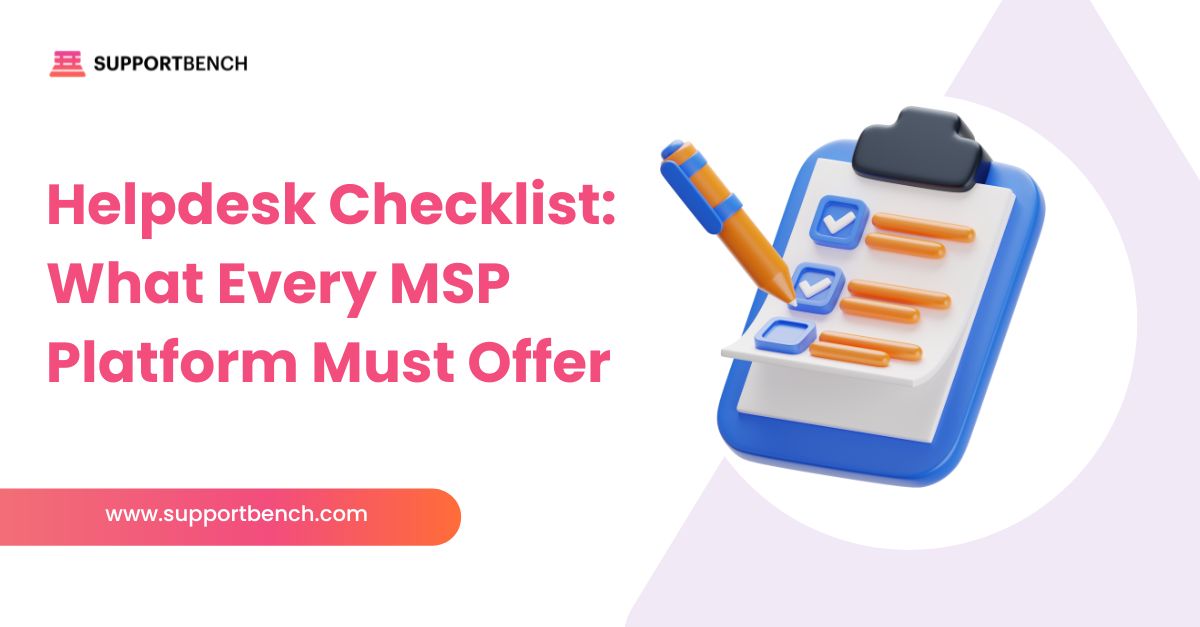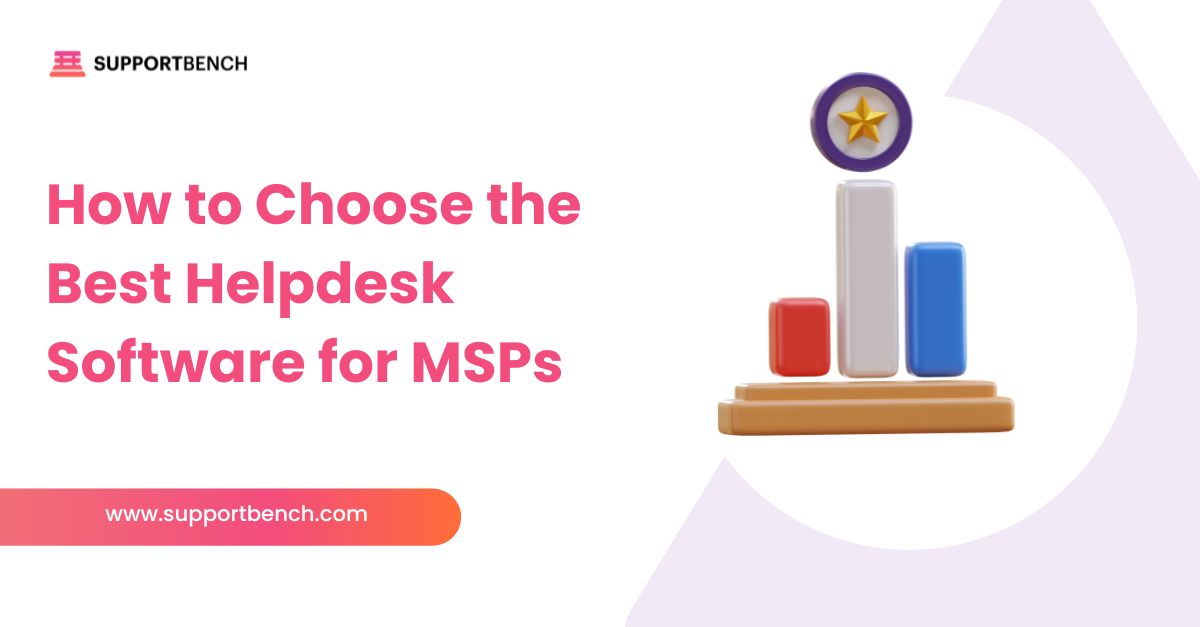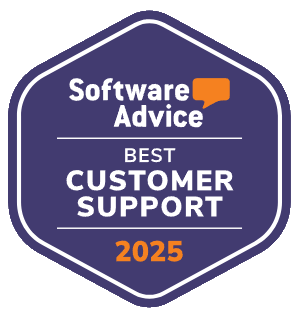For small businesses, every customer interaction counts. With limited staff and time, responding quickly—and consistently—can make the difference between a lost sale and a loyal customer.
Helpdesk software can help. By bringing structure and automation to your support process, even small teams can stay organized, reduce delays, and provide professional, high-quality service across all channels.
But with so many platforms out there, which features actually matter for a small business? This guide breaks down five essentials to look for—especially if you’re considering Supportbench as your helpdesk solution.

Here is the Quick Answer:
Small businesses need helpdesk software that’s simple, scalable, and effective. Focus on these five must-have features: unified multi-channel support, smart ticket automation, a built-in knowledge base, basic analytics, and an easy-to-use interface with flexible pricing. These tools save time, reduce errors, and help small teams deliver fast, reliable service without extra overhead.
1. Unified, Multi‑Channel Support
Today’s customers expect quick answers, no matter how they reach out—email, live chat, social media, or phone. For small businesses, managing these channels separately often leads to missed messages and inconsistent responses.
That’s where a unified shared inbox helps. By consolidating all customer communications into one dashboard, your team can stay on top of inquiries, assign tickets easily, and avoid duplicate efforts.
Best Practices:
✅ Start with core channels like email and live chat based on your customer habits.
✅ Use collision detection to flag when another agent is viewing or replying to the same ticket.
✅ Monitor which channels generate the most inquiries and adjust staffing or workflows accordingly.
2. Smart Ticket Management & Automation
Manually managing customer requests slows down small teams. Smart ticket management automates how inquiries are categorized, routed, escalated, and resolved—saving valuable time and improving accuracy.
With rule-based workflows, incoming tickets are automatically sent to the right person, prioritized based on urgency, and escalated if deadlines are missed. This keeps your response times fast and your service consistent.
Best Practices:
✅ Set rules that send technical tickets to specific team members.
✅ Use SLA timers to trigger reminders and automatic escalations.
✅ Set up auto-replies to confirm receipt and share estimated response times.

3. Integrated Knowledge Base & Self‑Service
Small businesses can reduce ticket volume and empower users by offering a searchable, well-organized knowledge base.
Customers prefer quick answers, and self-service tools make it easier for them to resolve common issues—like password resets or setup questions—without needing to contact support.
Linking relevant help articles to support tickets also helps agents respond faster and more consistently.
Best Practices:
✅ Group content by product, issue type, or customer segment for easier browsing.
✅ Use automation to suggest relevant articles when users begin submitting a ticket.
✅ Track views and search terms to refine and expand your knowledge base over time.
4. Basic Reporting & Analytics
Without clear data, it’s nearly impossible to improve customer support or manage team performance. Even a simple helpdesk platform should provide essential reports on volume trends, response times, agent productivity, and customer satisfaction.
These insights help identify bottlenecks, monitor staffing needs, and support decision-making as your business grows.
Key Metrics to Track:
- First response time
- Average resolution time
- Customer satisfaction (CSAT)
- Ticket backlog and volume trends
Best Practices:
✅ Review dashboards weekly to catch spikes or delays.
✅ Compare backlog trends with staffing levels or peak hours.
✅ Use CSAT trends to highlight wins or flag recurring service gaps.

5. Usability & Cost‑Effective Scalability
Small business support teams don’t have time to wrestle with clunky software or hidden costs. The best helpdesk platforms offer clean, intuitive dashboards, mobile accessibility, and pricing that scales predictably with your growth.
A user-friendly interface speeds up onboarding, while transparent pricing prevents unpleasant surprises as your needs expand.
Best Practices:
✅ Choose platforms with minimal setup and intuitive UI.
✅ Ensure a mobile app is available to manage urgent tickets remotely.
✅ Select pricing tiers that allow gradual feature adoption without major upfront costs.
Summary Table: Key Helpdesk Features for Small Businesses | ||
Feature | Why It Matters | Suggested Action |
| Multi-Channel Shared Inbox | Prevents Missed Customer Messages | Implement Email + Chat; Explore Adding Phone Later |
Smart Ticket Routing & Automation | Saves Time and Eliminates Manual Errors | Set Rules for Routing and Automated Responses |
| Knowledge Base Integration | Reduces Repetitive Tickets and Supports Self-Help | Publish FAQs, Link During Ticket Creation |
Reporting & Analytics | Enables Data-Driven Improvements and Resource Planning | Use KPI Dashboards for Decision-Making |
| Simple UX & Scalable Pricing | Ensures Adoption and Supports Growth Affordably | Choose Intuitive UI and Transparent Pricing Tiers |
Additional Features Worth Considering
While the five features above are essential, several other capabilities can further enhance support operations for small businesses:
Agent Collaboration
Internal notes, mentions, and assignment tools streamline teamwork. These features improve agent communication, reduce confusion, and keep everyone aligned throughout the ticket lifecycle.
Role-Based Access & Security
Security is critical. Role-based permissions and data encryption ensure that only authorized personnel can access sensitive customer data—helping your business stay compliant and build trust.
Mobile Apps
For remote agents or teams working after hours, mobile apps provide instant access to support tickets. This flexibility keeps response times short and maintains service continuity on the go.
Integrations
Connecting your helpdesk to CRM tools, eCommerce platforms, or project management systems helps eliminate data silos. Integrated systems improve efficiency and provide agents with the context they need to deliver better support.
Cloud-Based Platform
Cloud-hosted platforms like Supportbench reduce IT overhead while offering strong uptime, built-in scalability, and remote accessibility. This makes them ideal for growing teams without dedicated tech infrastructure.
Step-by-Step Guide: How to Choose a Helpdesk System
Choosing the right helpdesk software isn’t just about picking features—it’s about aligning with your workflows, team size, and growth plans. Follow these steps to make an informed, strategic choice:

1. Identify Your Priority Channels
Decide which support channels matter most for your business—email, live chat, phone, or social media. This will help you shortlist platforms that offer strong coverage where your customers actually reach out.
2. List Must-Have vs. Nice-to-Have Features
Separate essentials (like ticket automation, SLA alerts, or knowledge base tools) from optional extras. This helps keep the decision process focused on value, not vanity.
3. Shortlist Helpdesk Tools
Research and compare platforms based on usability, feature set, pricing transparency, and available integrations. Look for tools that fit your size and sector.
4. Test the Software with Real Tickets
Use free trials or demos to simulate real-world scenarios. This will help you evaluate how intuitive the system is and whether it fits your team’s workflow.
5. Check Costs Per Agent and Channel
Understand how pricing scales with agents, volume, and support channels. Avoid solutions that hide key features behind expensive upgrades.
6. Train Your Team
Onboard your agents properly. Ensure they understand workflows, dashboards, ticket tagging, knowledge base updates, and basic troubleshooting within the platform.
7. Review KPIs Monthly
Track key performance metrics like customer satisfaction, average resolution time, and ticket volume trends. Use the data to fine-tune automation rules, staffing levels, and your knowledge base content.
Conclusion
For small businesses, the right helpdesk software is more than a convenience—it’s a foundation for reliable, scalable customer service.
By focusing on essential features like multi-channel support, ticket automation, knowledge bases, and real-time analytics, small teams can punch above their weight without burning out.
Investing in user-friendly, flexible software not only improves support operations but also strengthens long-term customer relationships. When your tools grow with you, your service quality stays consistent—even as demand increases.
Ready to simplify your support process and keep customers happy? Book your demo with Supportbench today and explore a helpdesk system built for small business success.















